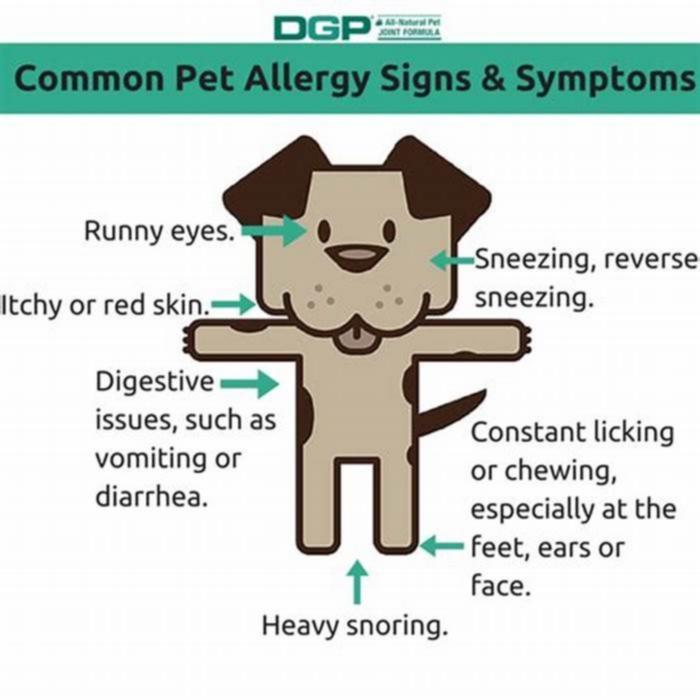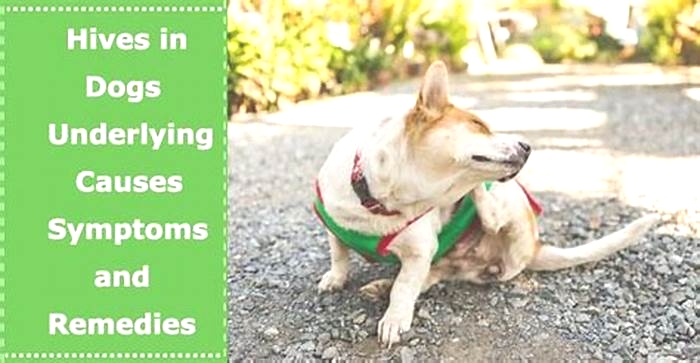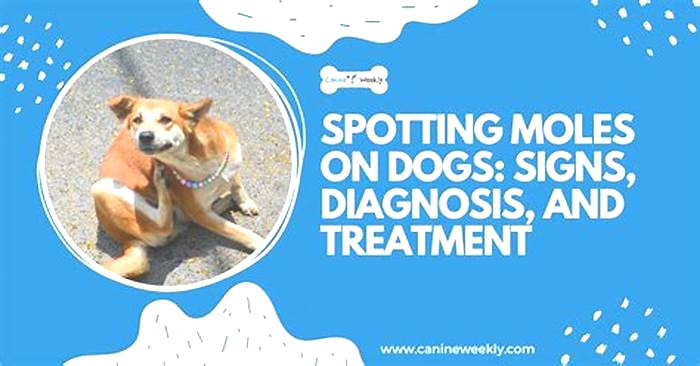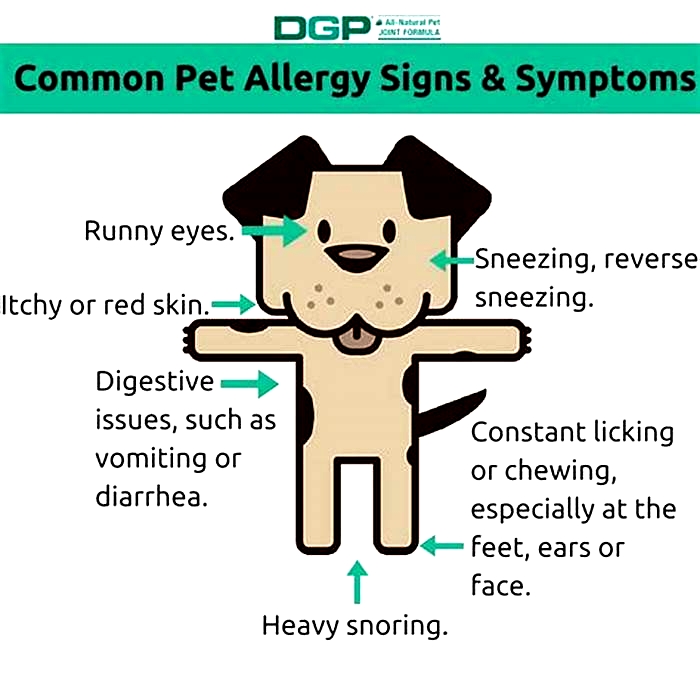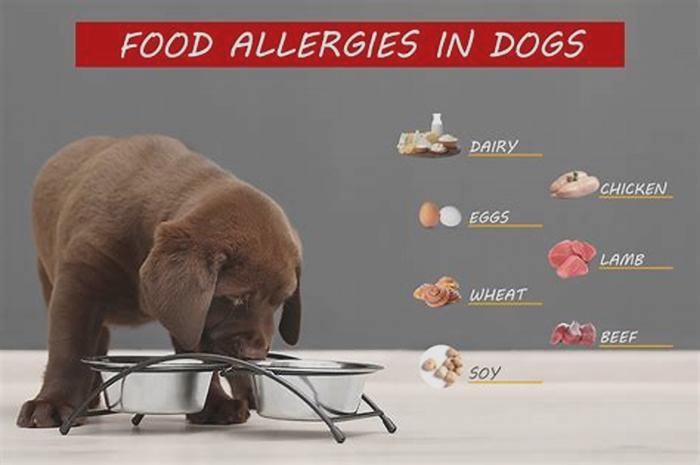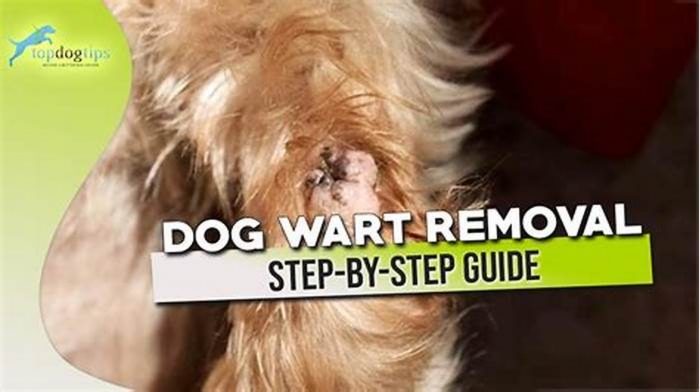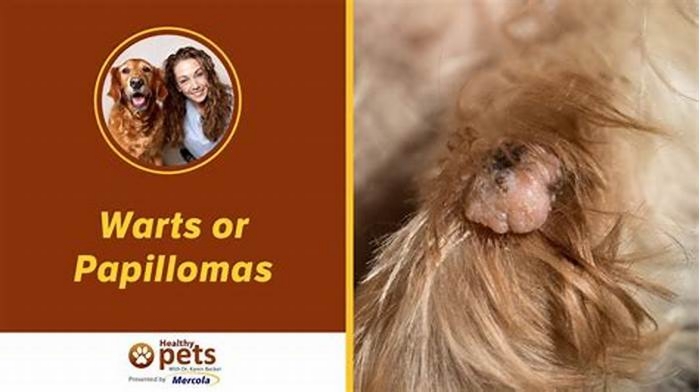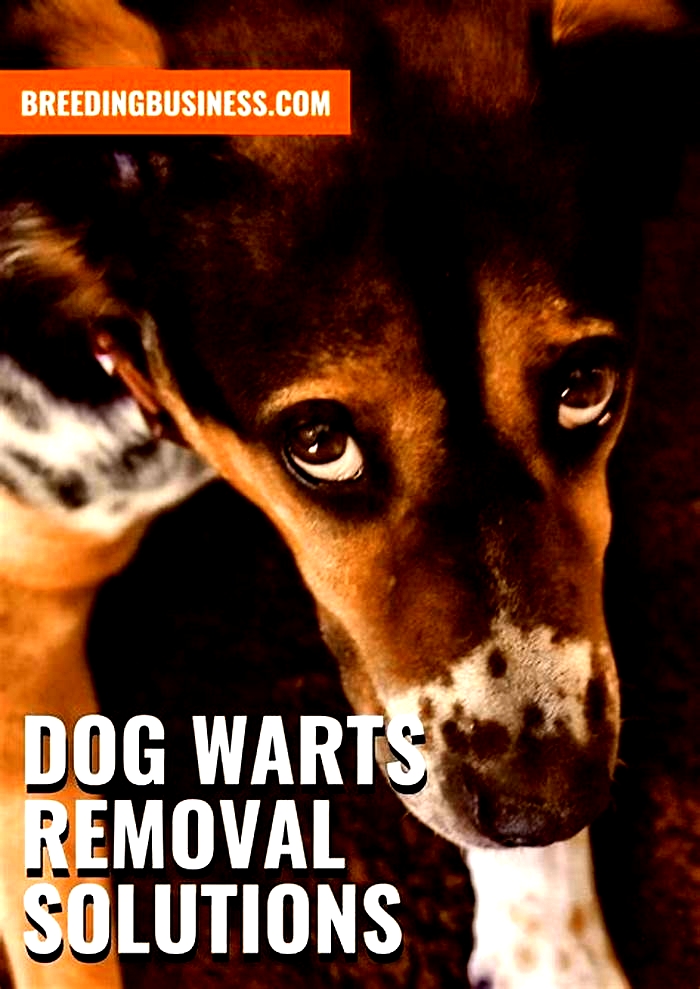Why do dogs suddenly get warts
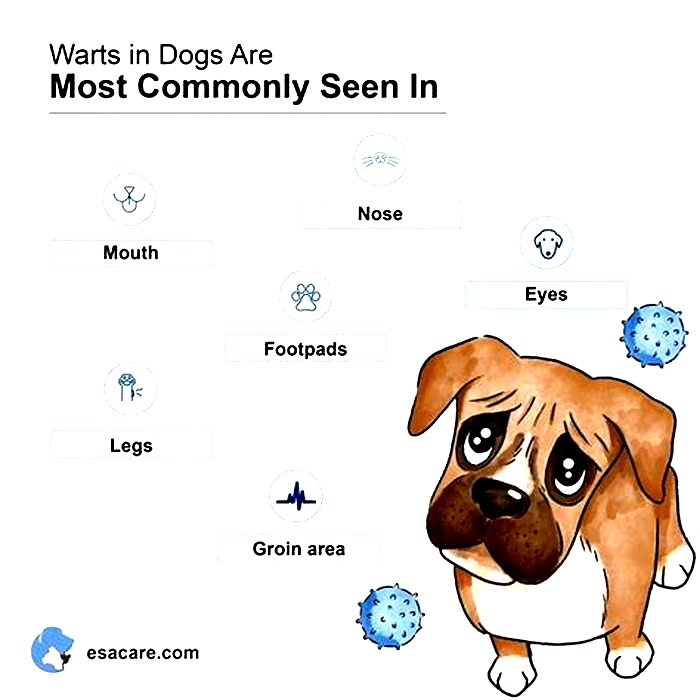
Why does my dog have warts?
Why does my dog have warts?
Canine viral papillomatosis sounds like a very concerning illness; however, it is the technical description of warts.
What are warts?
Warts are a benign type of tumour of the skin. They can be singular or multiple and can occur anywhere on a dogs body. Warts are generally caused by viruses. There are numerous types of virus which each cause a slightly different presentation of warts in different areas of the body. Warts are very common in dogs and for the most part are not serious or problematic.
How do dogs get warts?
Warts, or canine papillomas, are caused by certain types of virus. Dogs contract the virus when they come into contact with another infected dog. Canine papilloma viruses can survive for extended periods in the environment and can therefore be spread on objects such as bedding or toys.
Young dogs with immature immune systems or dogs with compromised immune systems are more susceptible to more significant infections where large numbers of warts develop. The virus usually gains entry to the dogs skin through a wound or bite. After coming into contact with an infected dog it takes one to two months for a wart to develop. While dog to dog transmission of the virus occurs, fortunately it cannot spread to humans or other animals.
What do warts look like?
A typical canine wart looks like a small cauliflower head. It has a stalk leading to a rough textured growth. Sometimes the lesions are hard scaly plaques; others can be hard inward growing masses. They are commonly found on the dogs face, but can be found on the neck, feet or anywhere else on the body.
Are viral papillomas dangerous?
No, generally canine warts regress and resolve without requiring treatment. This is because the dogs immune system responds to the virus. Usually within three months the wart will be starting to regress and shrink.
What treatment is needed for my dogs wart?
The first step if you find a new growth on your dog is to book an appointment with your vet. Your vet may suspect the growth is a wart based on its appearance; however, if it looks suspicious your vet might advise testing to check what type of growth it is. This could involve your vet taking a small sample using a needle and sending this off to the laboratory, or surgical removal and testing.
If the growth is a suspected wart then monitoring for a period of time to check it is regressing may be all that is needed. Keep an eye on the wart and monitor closely for any problems or changes. If the wart seems to grow or look significantly different it would be prudent to seek advice from your vet.
Are canine warts troublesome or painful?
On the whole warts do not cause problems for dogs. However, if they occur in large numbers, as sometimes happens in young dogs (for example in the mouth) they can be problematic. In the case of a dog with large numbers of warts in the mouth or other area of the body treatment may be required.
Treatment can include antiviral medications; however, medication is usually only used in severe cases of oral papillomas. The most typical scenario is a dog with a singular or very small number of warts. Occasionally warts may bleed or become infected, in which case treatment may be needed to resolve this.
If a wart persistently bleeds your vet may advise removal. On the whole a wart will not bother your dog or cause any pain. Rarely if it occurs in an easy to reach area such as a leg the dog may lick or bite at the area. It is important to discourage this to avoid problems such as irritation and infection.
Can I prevent my dog getting warts?
There is no reliable way of ensuring your dog wont come into contact with a canine papilloma virus. As these viruses are very common and can survive outside the dog in the environment for extended periods it is virtually impossible to prevent infection. If a dog has a large number of warts (such as large numbers of oral papilloma) it would be sensible to limit its close contact with other dogs until the warts have regressed. However, in general given warts are not serious and in the majority of cases resolve without needing treatment no special care is needed.
Dog Warts: What are They & What Causes Them?
Can dogs get warts?
Dogs warts, not dissimilar to those seen in people, are relatively common in young dogs. However, most of the bumps that we think of as "warts" on the skin of older dogs are technically not warts at all. Nevertheless, they're commonly referred to as "warts" by veterinarians and pet parents alike. Here are more details about wart-like bumps as well as true dog warts.
What Is a Wart? (& Can Dogs Get Warts?)
A true wart is a virus-induced proliferation of superficial skin cells technically referred to as a viral papilloma. As with human warts, warts grow when a virus gets into the cells of the skin and change how the skin tissue grows, resulting in an unsightly bump.
Dog warts sometimes fall into the category better known as "wart-like," which means they're not virus-related but still look every bit like a wart. These bumps are exceedingly common in older dogs. They are proliferative skin masses that can grow anywhere on the skin and are typically no larger than the size of a pea. They are usually hairless and firm, but sometimes they exude waxy debris or even bleed.

What Causes a Dog Wart?
True dog warts occur in conjunction with papillomavirus infections, they are typically found in young dogs and most commonly in the mouth or around the face or genitals. Dogs are often infected after directly or indirectly coming in contact with other dogs in their community. To distinguish these bumps from other wart-like masses, veteterinarians refer to them as viral papillomas.
The cause of most wart-like masses seen in dogs is less clear, but the vast majority are considered sebaceous gland growths. Excessive division occurs in cells of the sebaceous glands of the skin and this leads to growth in a wart-like pattern. Thankfully, these growths are almost always benign.
A variety of wart-like, sebaceous gland growths are seen in dogs. Nodular sebaceous hyperplasia is the most common. They are typically round or cauliflower-shaped and may or may not ooze or bleed. These growths are seen most often in breeds such as Cocker spaniels, Miniature poodles, Miniature schnauzers and Beagles but can occur in any dog. Other forms of sebaceous gland growths include what are technically considered tumors another word for cancer. These include the sebaceous epithelioma, sebaceous adenoma and sebaceous carcinoma. This latter category is a malignant cancer, which is rare as it only occurs in about 2% of sebaceous tumors.
Dogs of all ages can get true warts or wart-like masses, but the rule of thumb is that young dogs get viral papillomas while old dogs get wart-like masses that are classified as either nodular sebaceous hyperplasia or sebaceous tumors.
Are Warts Harmful to Dogs?
Warts are generally considered a minor concern in dogs. While young dogs with viral papillomas may not enjoy having strange proliferative tissue in their mouths or having to forgo the dog park so that they don't transmit their warts to others, the warts are not considered painful. Some extreme cases, however, may include oral discomfort from an excess of proliferative tissue that may lead to rubbing or superficial erosion.

Similarly, older dogs with wart-like growths tend to experience no discomfort, even when these areas bleed. Some extreme cases may lead to uncomfortable skin infections and rarely to cancer. Otherwise, these growths are largely considered a cosmetic concern. Even when cancer becomes a concern, most patients will respond well to surgical removal. These tumors do not tend to spread to other tissues of the body. Your veterinarian can give you advice about your pet's bump and guide you on the best treatment.
Canine viral papillomas (true dog warts) are considered highly transmissible among young dogs; older dogs are more resistant to infection. But, you don't have to worry that your dog will give you a wart. Neither humans nor other animals are ever at risk this virus is very specific to dogs. Moreover, sebaceous gland wart-like masses are specific to the individual animal alone; they are never contagious or transmissible.
How Are Dog Warts Treated?
Canine viral papillomas require no specific treatment. They will regress on their own in a few weeks to months. Since they're considered a significant nuisance by many dog parents, many treatments have been tried most to no avail. Antiviral drugs and surgery may do more harm than good. However, consultation with your veterinarian is recommended and they can remove it or, if necessary, they will refer you to a board-certified dermatologist or veterinary surgeon for removal.
Since they are largely considered a cosmetic problem, wart-like growths in older dogs may not need treatment, but exceptions are often made, especially if the growth is growing quickly. Further, if they should bleed, become infected, become a nuisance for groomers or interfere with bodily functions, pet parents often elect to have them removed. Removing a wart or wart-like mass is only helpful if it serves the dog's overall quality of life, and you should seek out the advice of your veterinarian to ensure that removal is the best option. That said, should the wart be considered a significant cancer threat, removal with full microscopic examination analysis is strongly recommended. Thankfully, removal is a fairly simple procedure in most cases.
Unfortunately, dog warts can only be prevented in the case of viral papillomas. Even so, preventing papillomavirus infection is only feasible by limiting a dog's interaction with other dogs, which may not be advisable. No vaccine is currently available.
For older dogs at risk of sebaceous growths, no means of prevention has been definitively identified. Keeping dogs' skin and coat consistently clean is nonetheless considered helpful for those deemed predisposed and have your veterinarian regularly examine any new lumps or bumps that may arise.
Contributor Bio
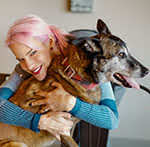
Dr. Patty Khuly
Dr. Patty Khuly is an award-winning veterinarian known for her independent thinking, her spirited pet advocacy, her passion for the veterinary profession, and her famously irreverent pet health writing. She is an honors graduate of both Wellesley College and the University of Pennsylvania School of Veterinary Medicine. She received her MBA at The Wharton School of Business as part of the prestigious VMD/MBA dual-degree program.
Two Main Causes Of Warts In Older Dogs (Finding The Facts)
This post may contain affiliate links. We may earn money or products from the companies mentioned in this post.
As dogs age, some of their behaviors and appearances change. You may wonder why your dog is getting warts as it gets older.
There are actually two main reasons why older dogs get warts: the first cause is canine papilloma virus, and the second is squamous cell carcinoma.
Of the two conditions, one is benign, while the other can be very serious.
Warts caused by canine papilloma virus are benign warts, meaning they are not harmful to your dogs health and they do not always need to be removed.
Meanwhile, warts caused by squamous cell carcinoma can be very serious and need medical treatment in order for them to not affect your old dogs health in the long run.
Unfortunately, you wont know the difference between the not-so-serious warts and the serious warts just by looking at them and will need a vet visit to determine their nature and severity.
Keep reading if you are worried about or just interested in your old dogs warts.
DISCLAIMER: We are not veterinarians. This blog post is for entertainment purposes only. If your dog has any health issues please consult your veterinarian.
Why Do Older Dogs Get Warts?
Whether the warts are due to the canine papilloma virus or are caused by squamous cell carcinoma, they tend to develop in dogs with a suppressed immune system.
Dogs who are sick, have chronic allergies, are on medications for chronic illnesses, or are older all have suppressed immune systems.
If the immune system is suppressed or not as strong as it should be, like in the case of older dogs, then it cannot deal with viruses the same way a younger, healthier dogs immune system would.
Ideally, a healthier dogs immune system would fight the virus and prevent it from developing the warts on your dogs skin.
In this case, you may not even know your dog was sick if they had the canine papilloma virus.
However, if the immune system is suppressed or inactive, the virus is allowed to spread, and you will notice the development of warts.
The development of these warts, where they are on the body, and their accompanying symptoms are different depending on whether they are caused by canine papilloma virus or squamous cell carcinoma.
Read on to get a more detailed breakdown of the two conditions and how they may affect your dog.
Canine Papilloma Virus Warts
Lets take a closer look at all things canine papilloma virus.
1. What Do They Look Like?
Canine papilloma virus warts can take on a few different appearances:
- The wart can be a small bulb attached to a stalk that comes out of the skin; it looks a little like a head of broccoli or cauliflower
- The bulb is usually rough to the touch
- There can be a single wart or cluster of them which appear like a plaque
- They can also be inward-growing, meaning they are beneath the skin and will feel like a small lump
- In extreme cases, the warts may take over a large area of the body and look like a solid mass
Regardless of what the wart looks like, it will feel firm. If the wart feels soft, squishy, or it feels like it is filled with fluid, then it is more likely to be a cyst that needs to be drained by a vet and should not be squeezed or popped at home.
2. Where Will I Find Them?
Canine papilloma virus warts are commonly found on or near mucus membranes:
- Near the eyes
- On the eye and the lid
- Around or in the mouth
- Around the genital and anal area
Sometimes, canine papilloma virus warts also grow in clusters or plaques between the toes.
3. Are They Dangerous?
Canine papilloma virus warts are not inherently dangerous, and they will typically regress within a few months. However, their position and the extent of the warts may cause your old dog to have other issues.
If your dog has warts on their lips or in their mouth, then they may not want to eat or drink and can become malnourished or dehydrated.
If they have warts on their feet, then they can have issues walking. Alternatively, if they have warts on their anal area, then pooping can become a problem, and a secondary infection may set in.
If the warts are scraped or become an open wound, then there is also the risk of secondary infection. If your dog has canine papilloma virus warts, they need to be dealt with carefully during grooming.
4. Are They Painful?
If the warts are small, individual, and not in a sensitive place, then they should not cause your dog any pain.
However, if the warts are very large, inside the mouth, around the eyes, near the anus, or covering a large portion of their body, your dog could be in considerable pain.
5. How Do They Spread?
Canine papilloma virus warts are spread by touching a surface contaminated by the virus such as dirty blankets, toys, or food and water bowls.
The virus can live for a long time outside of the body; therefore, it is very important to keep these items clean.
Canine papilloma virus warts can also be transferred from dog to dog. This commonly happens when dogs frequent parks or day cares where they are exposed to other dogs who are infected.
If you know your dog currently has canine papilloma virus, the responsible thing to do is to keep them at home until the virus is gone.
Old dogs are more susceptible because their immune systems are not strong enough to fight the virus off.
6. How Are They Treated?
Your dogs vet will diagnose the warts through a physical exam and possibly a biopsy. In most cases, the warts resolve themselves within three months.
Your vet will keep an eye on them with check-ups to make sure the warts are regressing and not spreading further.
If the warts are not regressing, your vet may prescribe antivirals and immune boosters to help your dogs body fight off the virus.
7. Can I Prevent My Dog From Getting Them?
It would be very difficult to prevent your dog from getting canine papilloma virus warts if they come into contact with other dogs or spaces and things where other dogs have been.
Ensuring a healthy immune system is the only way to help them fight off the virus quickly.
Squamous Cell Carcinoma Warts
Next, lets take a closer look at squamous cell carcinoma warts.
1. What Do They Look Like?
Squamous cell carcinoma warts look very similar to canine papilloma virus warts. However, they will often also appear red and irritated.
2. Where Will I Find Them?
Squamous cell carcinoma warts are most commonly found on the head, the abdomen (dont mistake them for extra nipples), the lower legs, in the nail bed, and the haunches.
Many experts believe the squamous cell carcinoma warts show up where there is more skin exposed to the sun; however, this is not always the case.
3. Are They Dangerous?
All cancers are dangerous, and squamous cell carcinoma often does not respond well to treatment.
Once the squamous cell carcinoma has appeared, there is a one-to-three-year life expectancy if the cancerous cells cannot be fully removed.
In addition to the cancer being dangerous, secondary infection needs to be considered, too.
4. Are They Painful?
Unlike canine papillomavirus warts, squamous cell carcinoma warts are almost always painful to the touch.
5. How Do They Spread?
If your dog has developed squamous cell carcinoma warts, then they can spread within the body through the lymphatic system.
6. How Are They Treated?
Squamous cell carcinoma does not respond well to chemotherapy, which means surgical intervention is required. The individual warts are excised by a vet.
7. Can I Prevent My Dog From Getting Them?
There is no foolproof way to prevent your dog from getting squamous cell carcinoma.
However, you can lower their chances of developing it by limiting their exposure to the sun or using a sunscreen when they are outside and restricting their access to dogs or areas contaminated with canine papilloma virus.
FAQs About Warts On Old Dogs
Can I catch warts from touching the warts on my dog?
Canine papilloma virus and squamous cell carcinoma warts cannot be transmitted between dogs and humans.
Which dog breeds are more prone to getting canine papilloma virus warts?
Pugs, Shar-Peis, Schnauzers, and Kerry blue terriers are all known to be more susceptible to canine papilloma virus warts.
Which dog breeds are more prone to getting squamous carcinoma warts?
Standard poodles, basset hounds, and bloodhounds are most susceptible to squamous cell carcinoma.
What is the difference between a wart and a skin tag/skin growth?
Old dogs often have small skin growths that are smooth to the touch and can appear anywhere on their body.
This is because cell replication goes a bit wonky as dogs age, and the result is often a small, benign skin growth.
| Wart | Skin growth |
| Rough texture | Smooth texture |
| Caused by canine papilloma virus or squamous cell carcinoma | Caused by age |
| May be benign or cancerous | Benign |
| Must be treated by a vet | Does not need to be treated |
Is there a link between canine papilloma virus and squamous cell carcinoma?
There is some research which states older dogs who have had canine papilloma virus in the past have a higher chance of developing squamous cell carcinoma in the future than dogs who have never contracted the virus.
Final Thoughts
There are many potential health issues to worry about when thinking about your fur babies. Many people wonder why dogs get warts when they get older.
As dogs age, they can develop skin tags or small growths, which are benign and just a sign of age.
However, dogs can contract canine papilloma virus and develop warts as a symptom. Fortunately, canine papilloma virus is rarely harmful if it is treated promptly.
Canine papilloma virus is more common in dogs with a lowered immune system like older dogs.
Dogs can also develop wart-like tumors if they have squamous cell carcinoma. Squamous cell carcinoma is very serious and can be fatal if not caught early enough to successfully remove the tumors.
To recap, canine papilloma virus warts are commonly found:
- Near the eyes
- On the eyes and lids
- Around the mouth
- Around the anal/genital area
Meanwhile, squamous cell carcinoma warts are typically located:
- On the head
- On the abdomen
- Along the lower legs
- In the nail beds
- On the haunches
Keep an eye out for any lumps and bumps on your dogs body, and get them seen by a vet at least once a year for a check-up.
Save To Pinterest
Top Picks For Our Dogs
- BEST PUPPY TOYWe Like: Calmeroos Puppy Toy w/ Heartbeat and Heat Packs - Perfect for new puppies. Helps ease anxiety in their new home.
- BEST DOG CHEWWe Like: Bones & Chews Bully Sticks - All of our puppies love to bite, nip, and chew. We love using Bully Sticks to help divert these unwanted behaviors.
- BEST DOG TREATS We Like: Crazy Dog Train Me Treats - One of our favorite treats for training our service dog puppies.
- BEST FRESH DOG FOOD We Like: The Farmer's Dog - A couple months ago we started feeding Raven fresh dog food and she loves it! Get 50% off your first order of The Farmer's Dog.
For a list of all the supplies we get for our new service dog puppies check out our New Puppy Checklist on the PuppyInTraining.com blog.
Two Main Causes Of Warts In Older Dogs (Finding The Facts) was last modified: March 8th, 2023 by LTHQ

